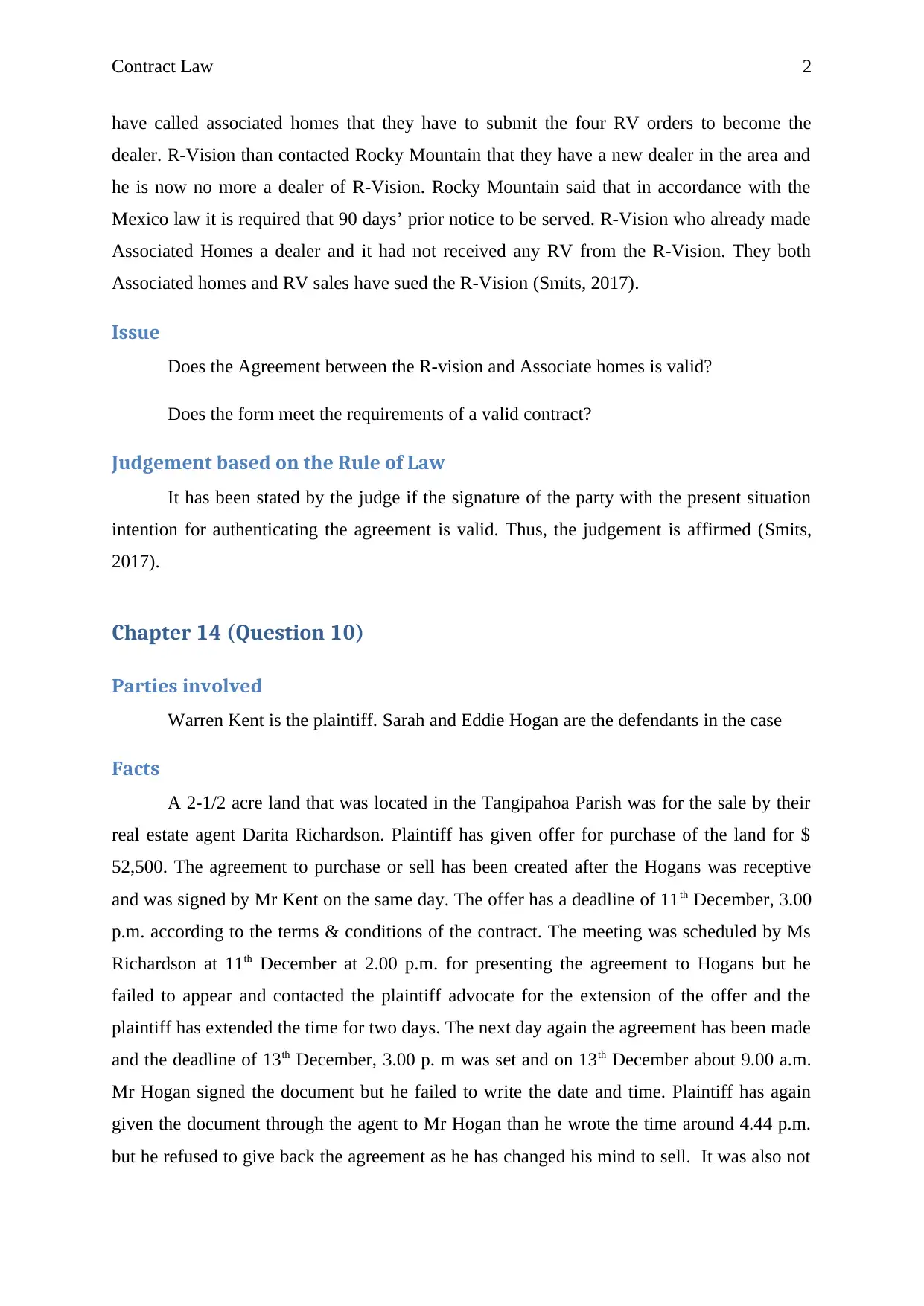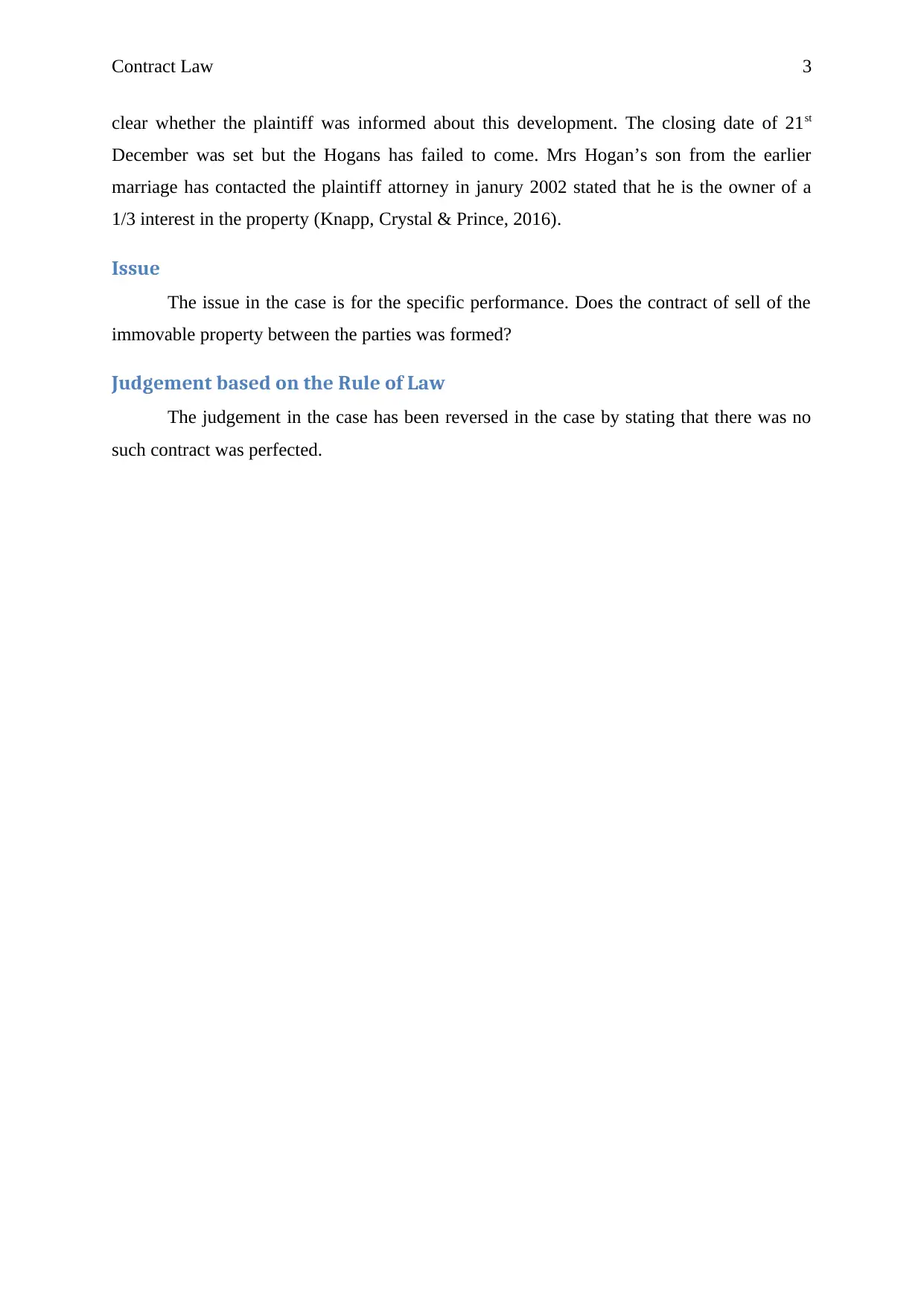In-depth Analysis of Contract Law: Case Studies and Legal Principles
VerifiedAdded on 2023/06/03
|5
|937
|271
Case Study
AI Summary
This case study provides an analysis of several contract law scenarios. The first scenario involves a dispute between AES employees and the company over an oral promise of 5% of the company's value upon merger, which the court deemed illusory. The second scenario examines a potential dealership agreement between Associated Homes and R-Vision, focusing on the validity of the contract and the intention of the parties. The third scenario involves a land sale dispute between Warren Kent and the Hogans, addressing the issue of specific performance and whether a valid contract for the sale of immovable property was formed. The document concludes by referencing relevant legal cases and publications, offering a comprehensive overview of contract law principles and their application in real-world situations. Desklib is a platform where you can find solved assignments and study materials.
1 out of 5






![[object Object]](/_next/static/media/star-bottom.7253800d.svg)